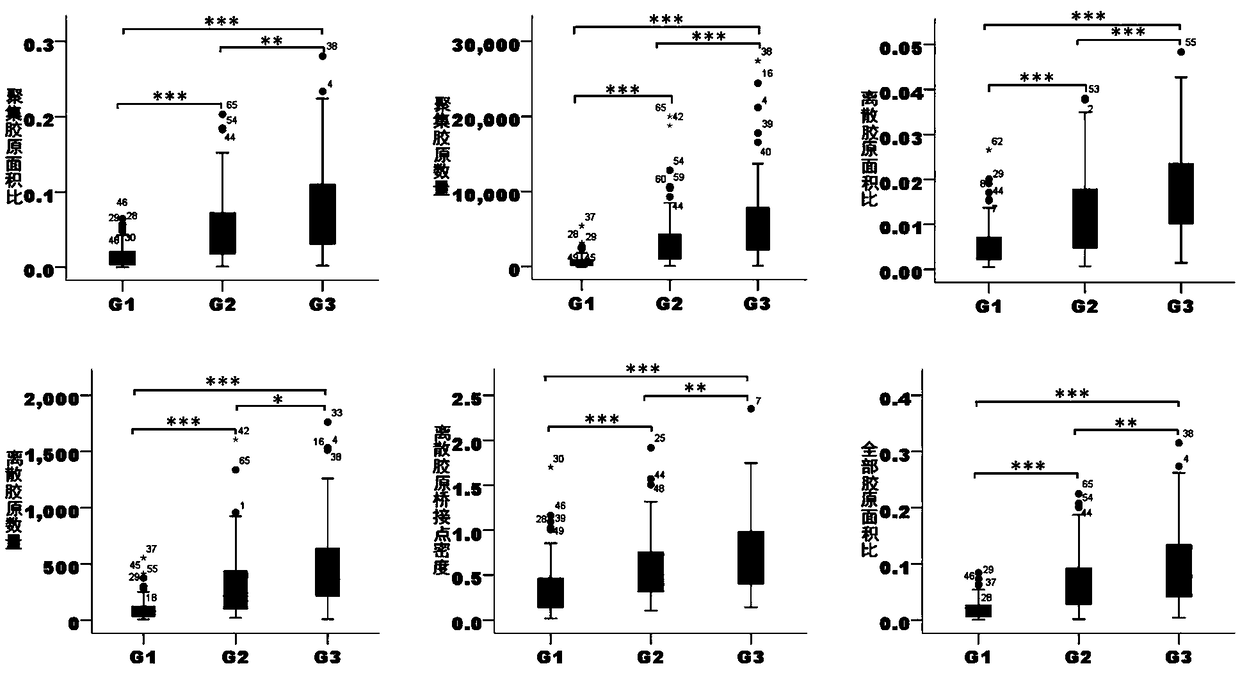Method for discriminating liver cancer differentiation grades by using multiphoton imaging technology
A multi-photon imaging and multi-photon technology, applied in the preparation of test samples, material excitation analysis, etc., can solve time-consuming problems and achieve the effect of overcoming time-consuming
- Summary
- Abstract
- Description
- Claims
- Application Information
AI Technical Summary
Problems solved by technology
Method used
Image
Examples
Embodiment 1
[0025] (1) Sampling
[0026] 200 cases of diseased liver cancer tissues were removed from patients by cutting, forceps or puncture, that is, fresh specimens without fixation.
[0027] (2) Quick-frozen film production
[0028] The sample is quickly frozen in the cryostat to below minus 18°C and then sliced. When slicing, the rocker handle is pushed back and forth rhythmically, and the slice is complete and thin (thickness 8-9 μm), and then it can be attached to the glass slide. The cut slices were fixed with 95% ethanol and sealed.
[0029] (3) Multiphoton imaging of collagen fibers inside the tumor
[0030] Using a laser scanning microscopy imaging system, set the excitation wavelength to 810 nm, and select an upright 10× objective lens (0.45 NA) to scan the sample. Set up 2 receiver channels, one at 370-419 nm, marked green, for collecting SHG signals, and the other 420-700 nm, marked red, for detecting TPEF signals. Single image size is 8×8 mm 2 , 512×512 pixel, a typic...
PUM
| Property | Measurement | Unit |
|---|---|---|
| wavelength | aaaaa | aaaaa |
Abstract
Description
Claims
Application Information
 Login to View More
Login to View More - R&D
- Intellectual Property
- Life Sciences
- Materials
- Tech Scout
- Unparalleled Data Quality
- Higher Quality Content
- 60% Fewer Hallucinations
Browse by: Latest US Patents, China's latest patents, Technical Efficacy Thesaurus, Application Domain, Technology Topic, Popular Technical Reports.
© 2025 PatSnap. All rights reserved.Legal|Privacy policy|Modern Slavery Act Transparency Statement|Sitemap|About US| Contact US: help@patsnap.com


